Creative composting
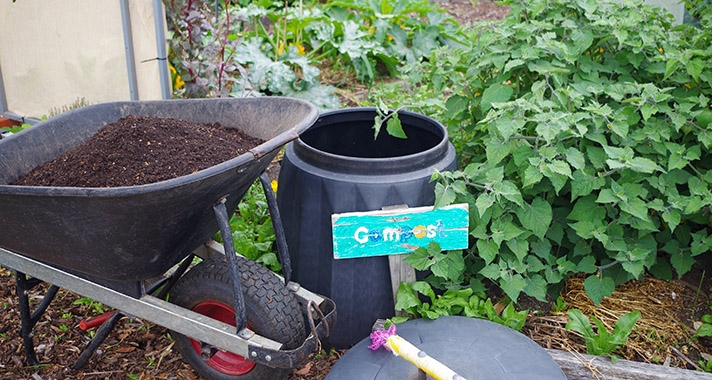
For an avid composter, autumn is the most exciting time of the year. The sidewalks become paved in ‘brown gold’, as trees shed their leaves at the turn of the season. Kitchen garden schools around the country are making the most of this readily available natural resource, adding carbon to compost systems built from repurposed and recycled objects in the name of reducing food waste.
At Elwood Primary School in Victoria, plane trees coat the grounds in a thick layer of waxy leaves every year. They block light from struggling seedlings and create a cosy habitat for slugs and snails. The school’s former kitchen garden teacher (and current SAKGF gardening guru) Kate Beckwith was looking for ways to get students excited about compost, while motivating them to collect this rich, organic matter. She hatched a plan, and the annual Festival of Fall was born.
“We developed a series of games and challenges, teaching students the power of positive thinking by re-packaging something they ‘have’ to do as something fun,” Kate explains. “We even developed an Autumn Olympics, where students would compete in challenges to see which pair could rake the highest pile of leaves in five minutes, or who could fill up sacks donated by a local greengrocer the fastest. We painted leaves for medals and awarded them to students on a small podium.”
Younger students were also involved in the festivities, decorating their classrooms with leaf and bark rubbings, and creating garlands and bunting using leaves and dried berries.
– Kate Beckwith, former kitchen gardent teacher at Elwood Primary School
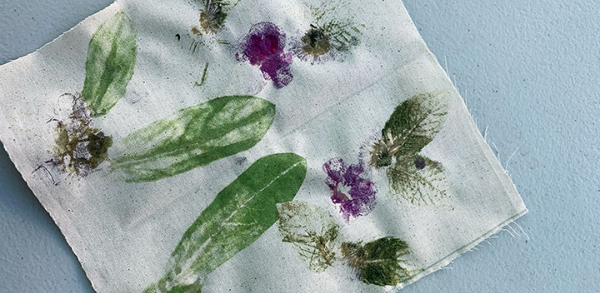
Leaf rubbing for bunting
Once the leaves are collected at Elwood Primary, they’re placed into tubs to break down into fibrous leaf mold hummus – the perfect home for worms. This rich mix is added to the school’s compost lasagna at a 4:1 ratio, supporting biodiversity and lessening the stinky aroma of green food waste.
“One of the biggest challenges of composting with kids is they have sensitive noses,” says Kate. “Compost can gross them out. But if you show them microorganisms moving under a microscope, or nestle a sock or an apple core deep in a clear tub of compost and track its decomposition, it blows their mind. They learn science, sustainability, life skills, and investing in the future – all through compost. Many of them become dedicated waste warriors.”
At Warrane Primary School in Tasmania, composting is also a group affair. “Getting a compost system working smoothly in a school garden is challenging,” says the school’s former garden specialist, Bridget Stewart. “There are hundreds of people taking part, at all ages, with a range of garden knowledge. And there are a lot of food scraps being created every day.”
Warrane’s school compost system is made up of three large bins buried 20cm into the ground to deter rodents and scavengers. The lids are rotated to let people know which bins are in use, and which ones are full and resting. The secret to making the system work is simple: carbon – a pile of which is always kept close at hand. “Crucially, there is a store of carbon rich material right next to the bin so kids can put a bucket of this on top of the scraps – layering as they go,” says Bridget.
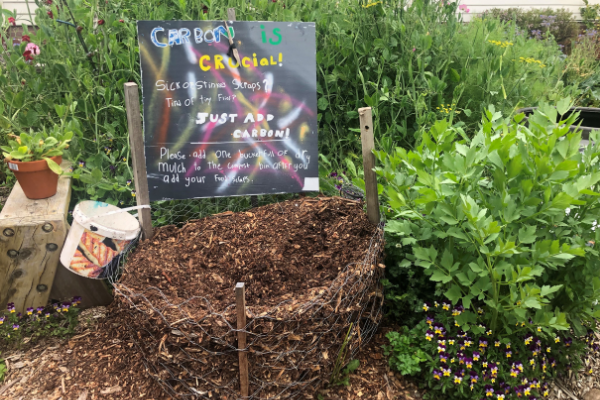
The carbon pile at Warrane Primary School
St Joseph’s Primary School in Queensland is all about reducing and reusing. They’ve formed strong connections with their local community, and recently acquired a bunch of big, empty ice-cream containers from a nearby business to use for composting.
“As stewards of our environment, students, staff and our greater community are trying to be conscious of the decisions we make and the consequences our choices have on the environment. We have been blessed to have three locally owned businesses committed to enhancing our garden’s soil,” explains St Joseph’s Garden Specialist, Alicia McConville. “A few of our eager Year Twos willingly donated their playtime to wash the compost containers.”
By reusing plastics we can help prevent pollution caused by reducing the need to harvest new raw materials. This saves energy and sustains the environment for our students and future generations – reducing the amount of waste that needs to be recycled or sent to landfills and incinerators.
– Garden Specialist, Alicia McConville
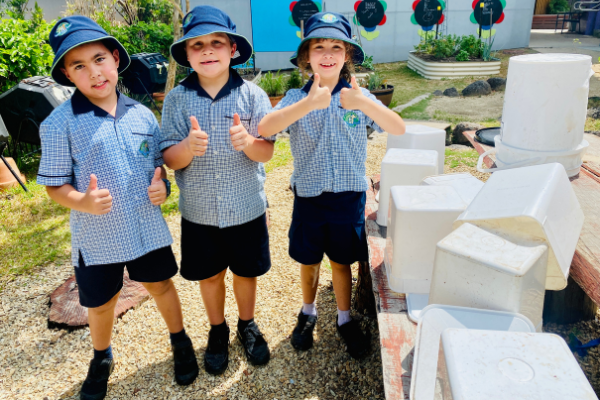
St Joseph's students cleaning re-purposed compost buckets
The resourceful team at Cranbrook Primary School, 320km from Perth, also make the most of what’s available, and have re-purposed old fridges into worm farms. A bonus to this clever design is that it keeps their compost out of the harsh desert sun.
“We have to use what we have on hand,” explains Program Coordinator, Maureen Adams. “You can’t always pop down the shops to pick up supplies out here.”
Educators at Cranbook also have access to another valuable source of fertiliser. “One of the positives of being in a remote area is we never have to buy our own manure,” says Maureen. “Members of the community bring it in.”
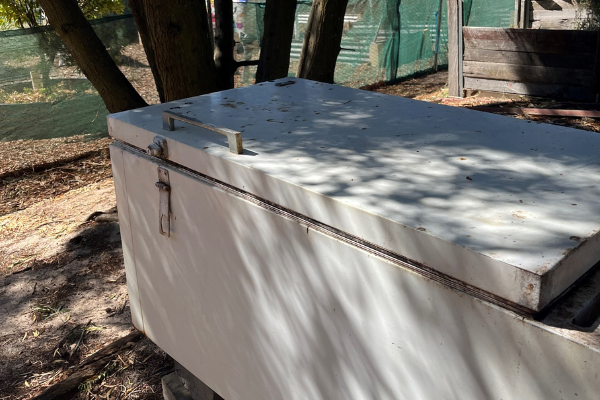
One of Cranbrook’s worm-farms in a fridge
While every compost system is unique, schools running the Kitchen Garden Program share a common interest in converting food waste into fresh fruit and vegetables. Instead of reading about sustainability in a textbook, students are invited to get hands-on, actively engaging in the food production system.
Want to dig deeper? Members can check out our comprehensive composting resource on the Shared Table.
< Back to Latest News
